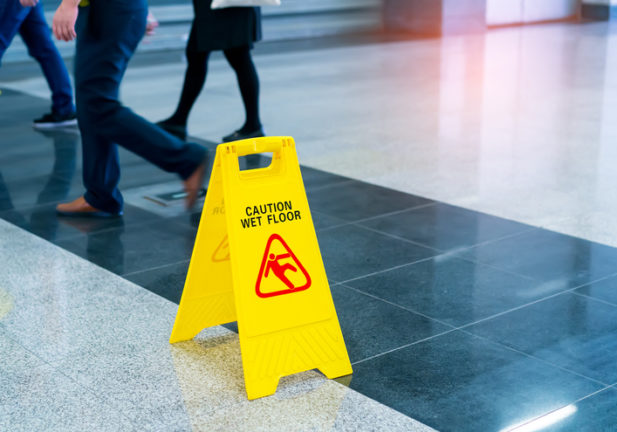Slip/Trip and Fall Cases: How to Assess Liability at the First Client Meeting

The following is intended as a resource for new lawyers. It should not be considered legal advice. Oatley Vigmond represents injured individuals in their claims against insurance companies. If you or someone you know requires assistance with a personal injury claim, we may be able to help.
Generally speaking, the purpose of the first meeting with a potential client is to obtain information from them in order to determine if the client has a case. As such, it is important to know what questions to ask so that you can obtain relevant information. By asking the right questions and obtaining the appropriate information, you will be in a position to provide good advice to the client and assess whether this is a case you want to take. It is important for both the lawyer and the client to know the relative degree in risk of proceeding with litigation.
In slip/trip and fall cases, the conduct and knowledge of the plaintiff is particularly important when assessing liability. Case law has established a number of different factors or circumstances in which the plaintiff will be found wholly or partially responsible for the fall. As such, you will want to ask the following questions:
– Was the client in a hurry?
– Were they intoxicated or impaired?
– Were they keeping a proper lookout?
– What was their knowledge of the slippery condition or tripping hazard?
– Were they familiar with the area?
– Were they wearing appropriate footwear?
You will also want to determine if the client took pictures of the condition or hazard that caused them to fall. Pictures will help you better understand what happened, allow you to assess the apparent danger posed in the circumstances, and determine if there is proof of the situation which caused the fall.
Once you have obtained all of this information you will be in a much better position to advise on the strength of the client’s case and whether there is a reasonable prospect of success if litigation is commenced. As a lawyer, the last thing you want to do is carry a case for a year or two only to find out that your client was wearing high heels in a snow storm while intoxicated. If you want more information on this topic, please visit the LexisNexis Practice Advisor, where I review the law of occupier’s liability as well as relevant cases in more detail.
Written By

A born-and-raised Barrie resident, Karen knows and loves her community. She is proud to be a partner in one of Canada’s most successful personal injury law firms—right in her own backyard. Karen joined Oatley Vigmond in 2013 as an associate lawyer. She holds a BA from Queen’s University and her Juris Doctor from Bond University in Australia. Prior to being called to the Bar in January 2013, Karen articled at a well-known personal injury law firm in Toronto.
